
“The mountains are calling & I must go & I will work on while I can, studying incessantly.” John Muir wrote those words in an 1873 letter to his sister. Having been born in northwest Montana, I can attest to the mountains’ invitation. I, in turn, would like to invite you to the mountains of Olympic National Park.
If you’ve read Part 1 and Part 2 of my Armchair Photography Guide to Olympic National Park, you will have learned tips and techniques for photographing the beaches and forests within this vast piece of land on the Olympic Peninsula. In Part 3, it’s time to see where and what to photograph of the Olympic Mountains from pullouts, parking areas, and short trails. Whether you are a first timer or a repeat visitor to this place, what you read in this guide will hopefully help you create your own gorgeous images to show friends, family, and colleagues the story of your Olympic National Park adventure.
My own mountain photo journey began along the southern shores of Lake Crescent, ending at an elevation of 5,242 feet on Hurricane Ridge. The yellow on the park map below outlines my combined winter and summer routes, while the red line indicates where I traveled for mountain shots.

A map route to the mountains, Olympic National Park / NPS / Rebecca Latson
Lake Crescent
After spending time in the Sol Duc valley for forest photos, you’ll be ready to return to Highway 101 and travel east along Lake Crescent’s southern and northeastern shoreline. There are several pullouts along the shore side of the road, including the parking lot of Fairholme Store. Watch for oncoming traffic before wheeling into a pullout as the road is quite busy with regular cars and logging trucks.

A smartphone view of the mountains around Lake Crescent, Olympic National Park / Rebecca Latson
Further east, beyond the various lakeside pullouts, follow the sign to Lake Crescent Lodge and turn left onto the narrow road. Whether you stay at this historic lodge or not, you can capture some wonderful images of both building, dock, and lake. Yes, include people and manmade structures in a few shots to add reference and scale for your viewing audience.
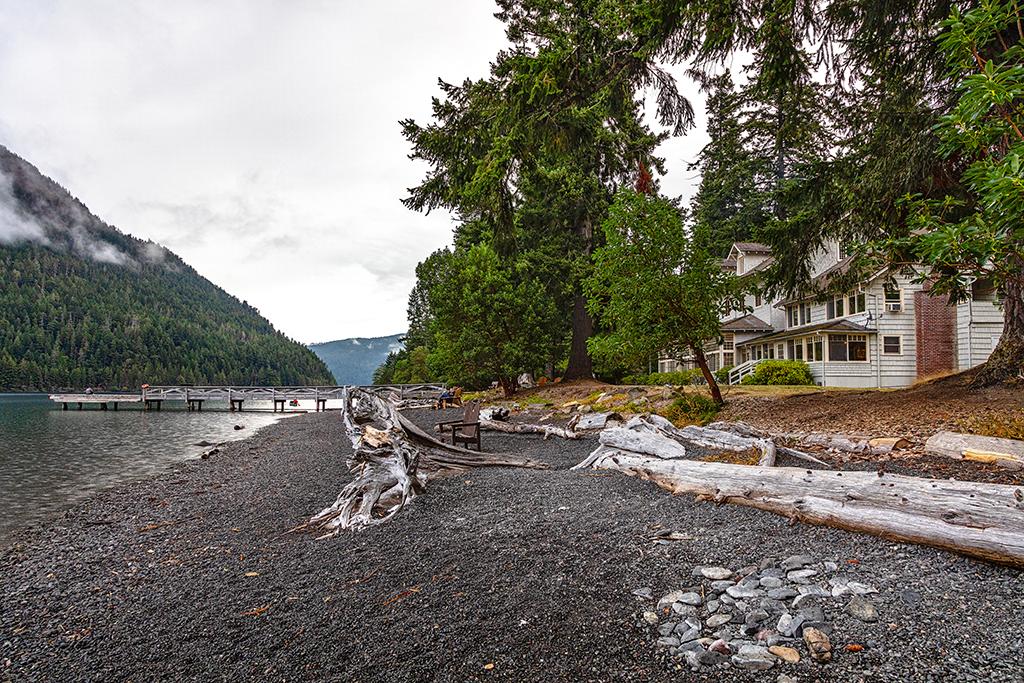
The lodge, the beach, the dock, and the lake, Olympic National Park / Rebecca Latson
Take a photo of a scene both with and without people and decide which one you feel makes the most impact.

An early morning view of the dock and scenery at Lake Crescent, Olympic National Park / Rebecca Latson

Standing on the dock in the morning, at Lake Crescent, Olympic National Park / Rebecca Latson
If you are staying in one of the upstairs historic rooms with a lakeside view, take a photo through your window to capture the view outside. The window frame and curtains make a nice natural frame for your subject.

A view with a room, Lake Crescent Lodge, Olympic National Park / Rebecca Latson
Early mornings (6:30 a.m. to 7:30 a.m.) are great times to photograph the scenery right outside the lodge. Not many people are stirring, yet, and the lake water is generally still and smooth. Walk onto the dock. Get a leading line image of the dock as it stretches out and over the water, then turn your tripod and camera toward the shore for another leading line shot looking up toward the lodge.

The Lake Crescent Lodge dock leading line, Olympic National Park / Rebecca Latson

Up the dock and toward the lodge, Olympic National Park / Rebecca Latson
Walk along the pebbly shore. SLR users, bring along your circular polarizer (CPL) and graduated neutral density (grad ND) filters. The CPL filter, which screws over your lens and acts much like your sunglasses, will remove surface glare and reflections from the water so you can see into the depths of the clear Lake Crescent. The grad ND filter, a half clear-half shaded piece of resin or glass, will keep the brighter horizon from overexposure (blowing out) while you adjust your camera settings for the darker foreground. If you have never heard of either of these filters, check out this article I wrote for the Traveler a few years back. CPLs are also great for emphasizing texture and color to any stray rainbow you might encounter on a cloudy day.

An early-morning rainbow at Lake Crescent, Olympic National Park / Rebecca Latson
Make use of a foreground object like a log or a large rock poking out of the water. Foreground objects add a sort of 3-dimensional depth to your composition, with a foreground, middle ground, and background. Foreground objects also act like leading lines, with the viewer's eye starting at the front of photo on that foreground, then moving to the background. A wide-angle lens (14mm - 35mm) or the wide-angle setting on a point-and-shoot work well at keeping everything focused, while creating slightly different perspectives to the image, depending upon whether or not you are standing over, or hunkered down close, to the foreground object. And, speaking of perspectives, photograph the same scene from different angles.
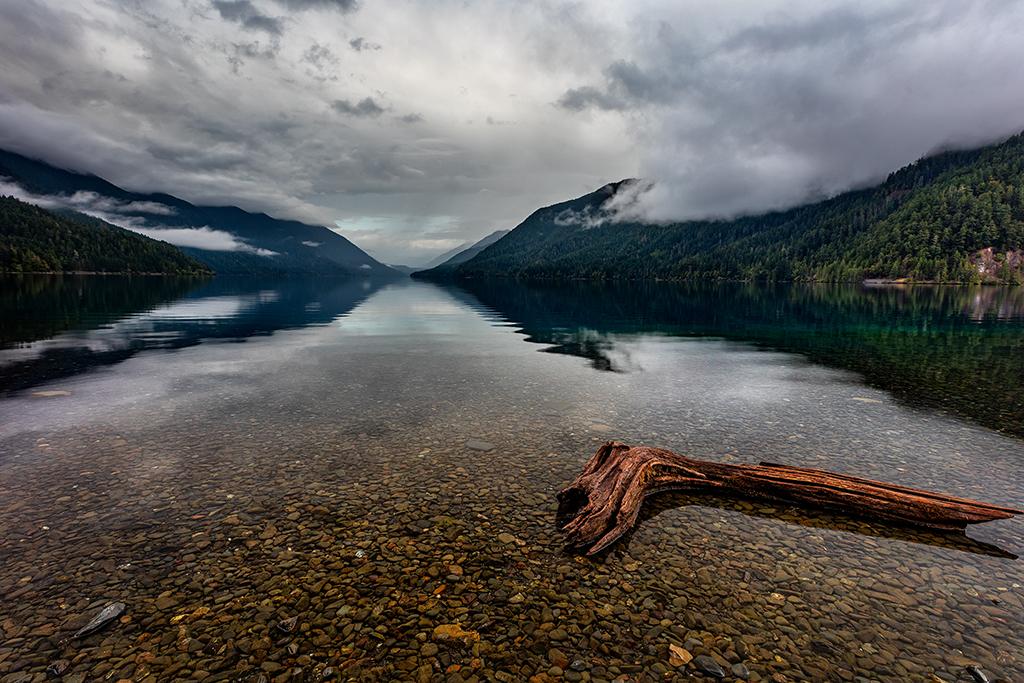
The log in the lake, Olympic National Park / Rebecca Latson
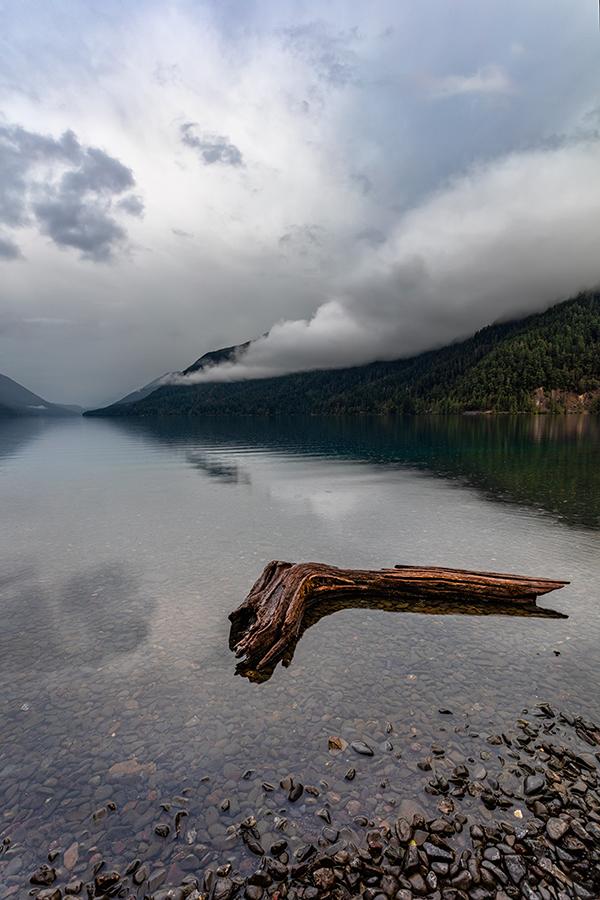
A vertical shot of that log in the lake, Olympic National Park / Rebecca Latson

A different perspective of that log in the lake, Olympic National Park / Rebecca Latson
Don't forget to turn your tripod and camera around to photograph any interesting scenes behind you.

Lake Crescent shoreline scenery, Olympic National Park / Rebecca Latson
On a cloudy day, you might even want to try your hand at a time-lapse video with your point-and-shoot, SLR, or smartphone. All you need is a little patience and about 25-30 minutes of uninterrupted real time. Oh, and if you are using your smartphone, you’ll want a tripod mount. Handholding a time-lapse is a recipe for disaster. You can get smartphone tripod mounts on Amazon for $6.
From Lake Crescent, it’s about an hour to the top of Hurricane Ridge. Check in at the Olympic National Park Visitor Center for literature and information before heading up the road for your day of mountaintop photography. Stop at any of the pullouts along your way up the twisty-turny route. About a quarter-mile prior to your arrival at the Hurricane Ridge Visitor Center parking lot, you'll see a large pullout to your left overlooking the dirt and gravel Obstruction Point Road. Set up your tripod for some awesome panoramic views. You might even see a lone backpacker hiking back up that road.
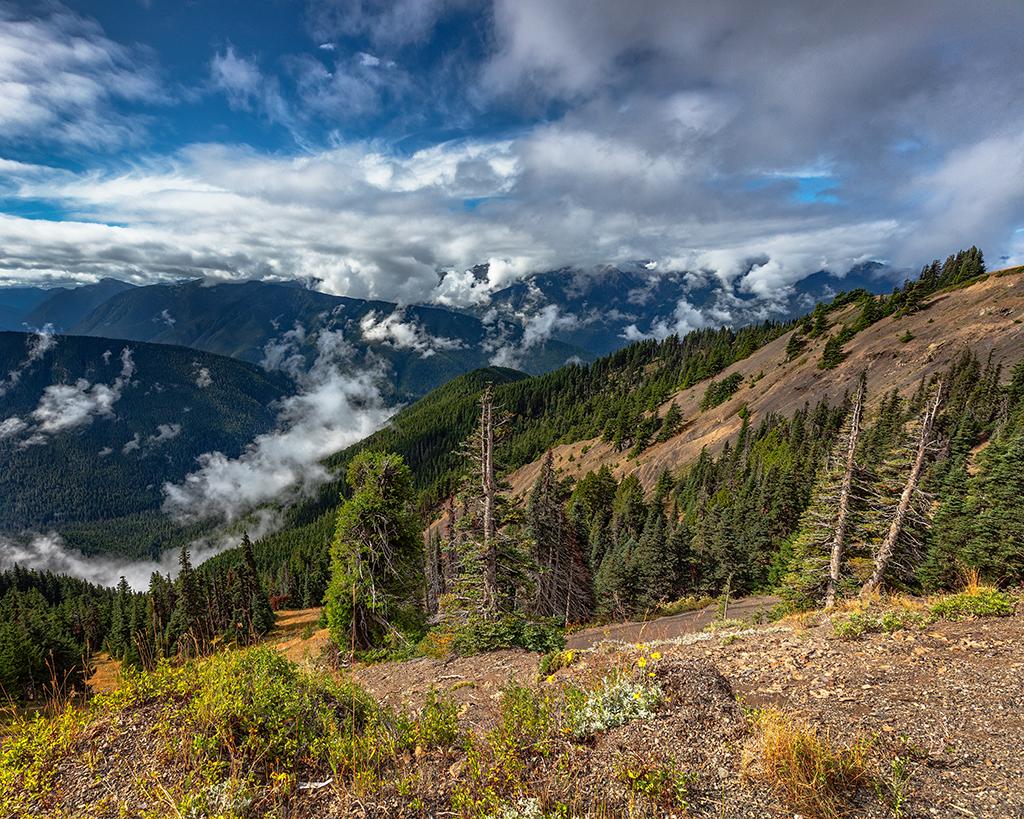
Olympic mountain scenery, Olympic National Park / Rebecca Latson

Hiking back up Obstruction Point Road, Olympic National Park / Rebecca Latson
The breeze can be strong at that higher elevation and you'll become mesmerized by the swirling clouds. What do you think a scene like that might be perfect for? Yup - more time-lapse videos.



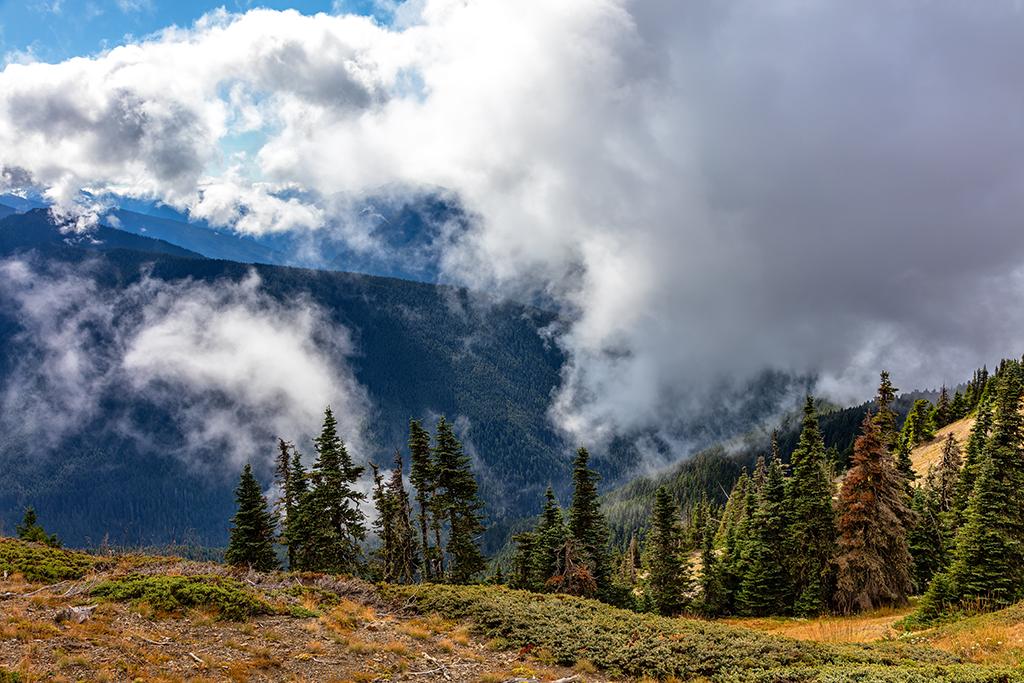



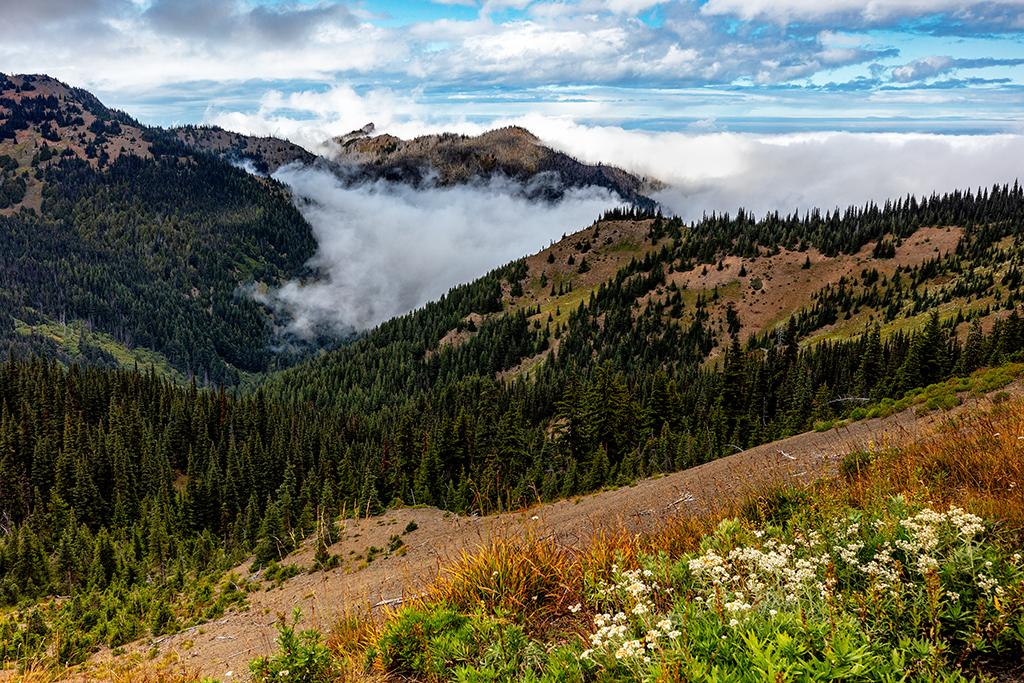


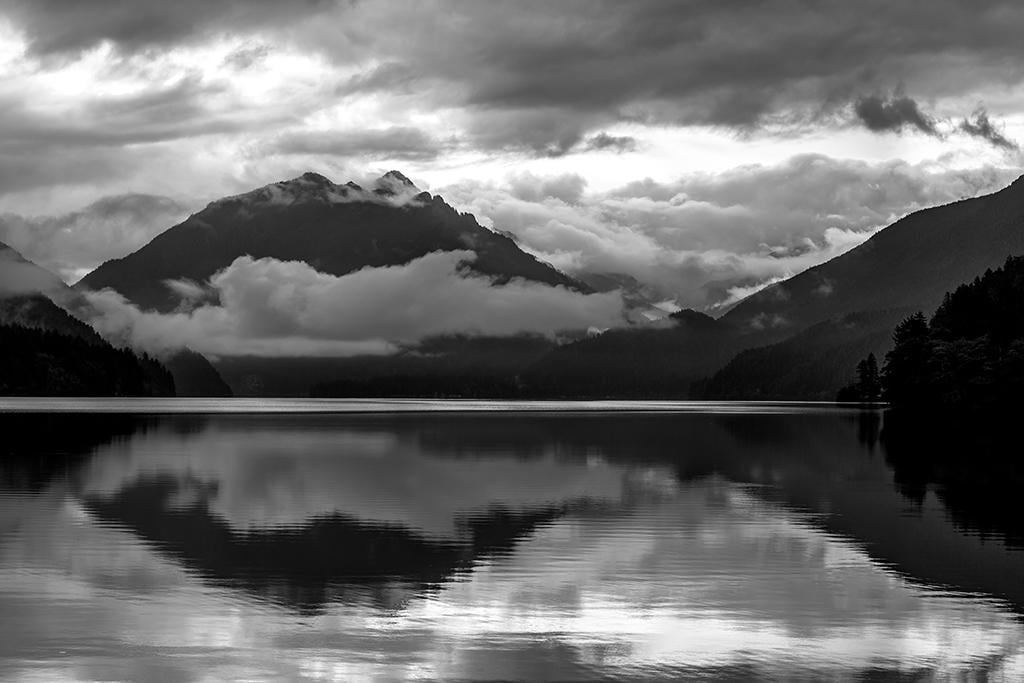




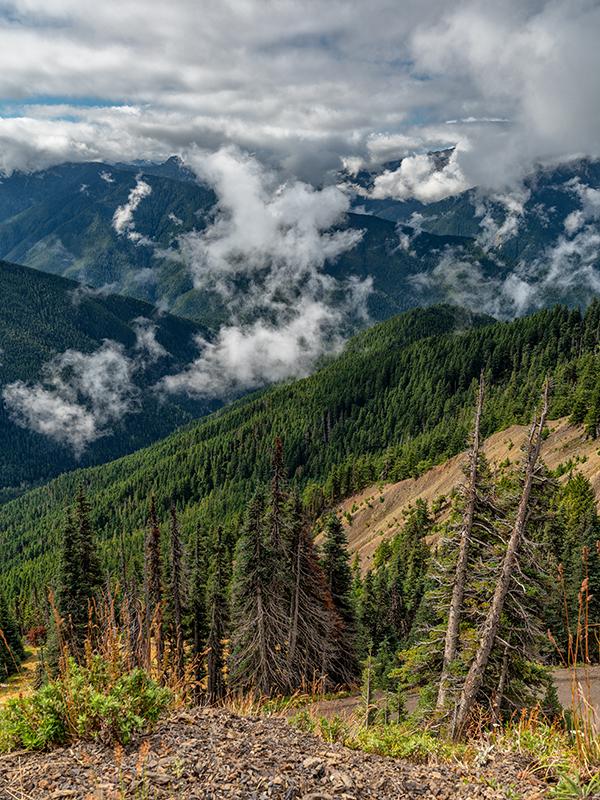

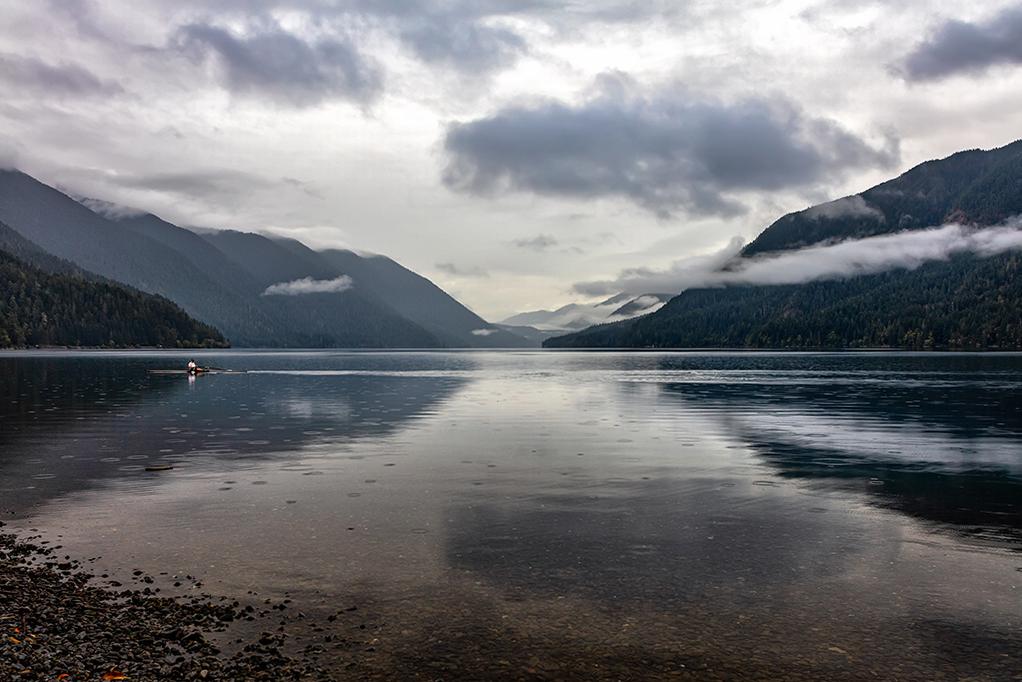

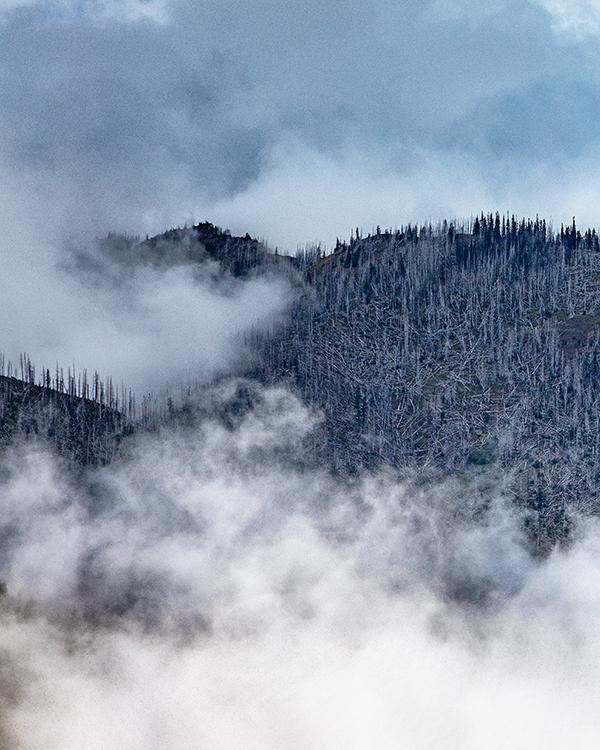

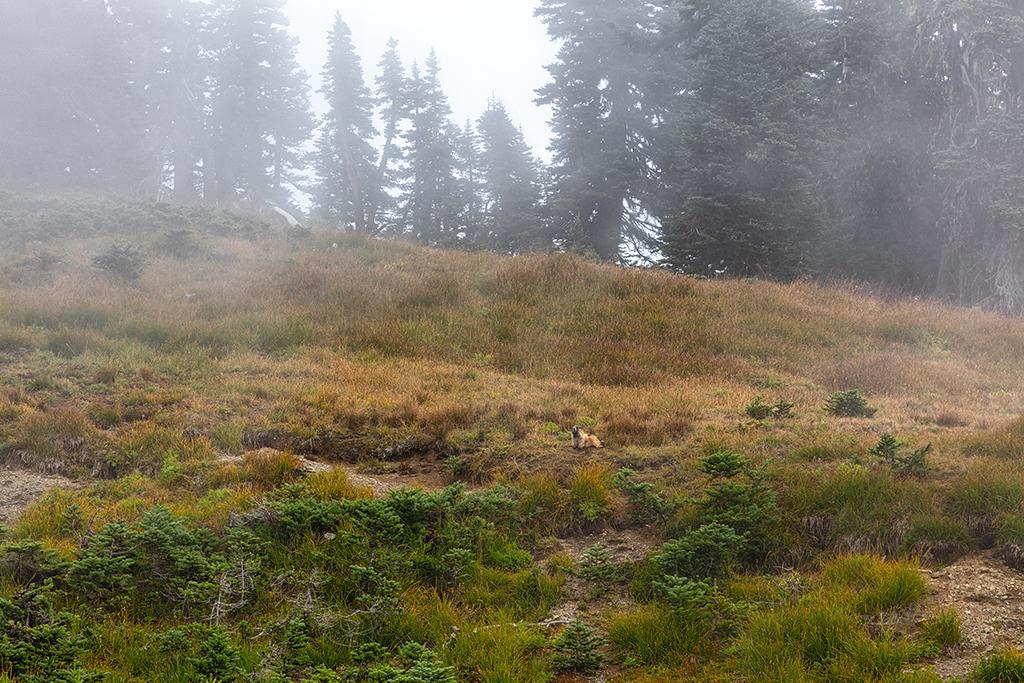
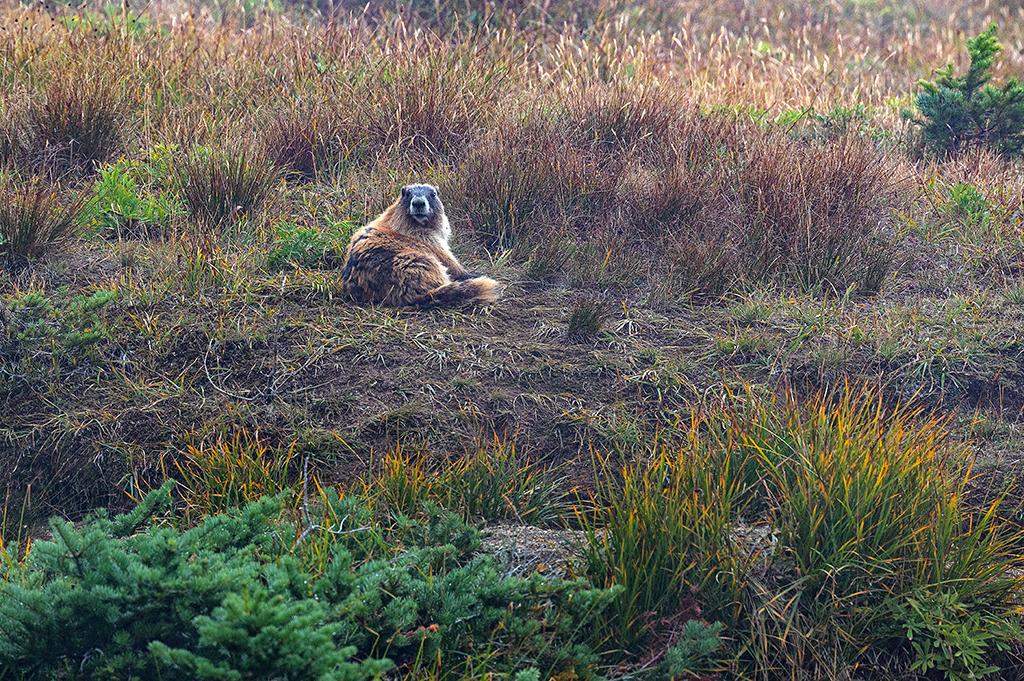

Comments
Loved this series. But amazingly enough got many of the exact same shots during my visit to the park on my smartphone with no guidance whatsoever.
That's great, Eddie! I'm glad you didn't need any guidance. Others, though, appreciate a few tips and techniques they might not have thought of before, and that's what this Armchair Photography Guide series is all about. It's for those people who are not able to or do not want to travel out into the backcountry loaded down with camera gear. These guides are examples for others of how they can achieve great images at pullouts, view areas and short trails, regardless of whether they use a smartphone, point-and-shoot, or SLR. My Armchair Photography Guides are sort of "jump-starters" for others who want to capture photos and memories of their national park visit to share with their friends, family, and colleagues, and I hope these guides are helpful.
I liked the layers of scenery on Hurricane Ridge best and found the time lapse of the cloud cauldron to be very mesmerizing!